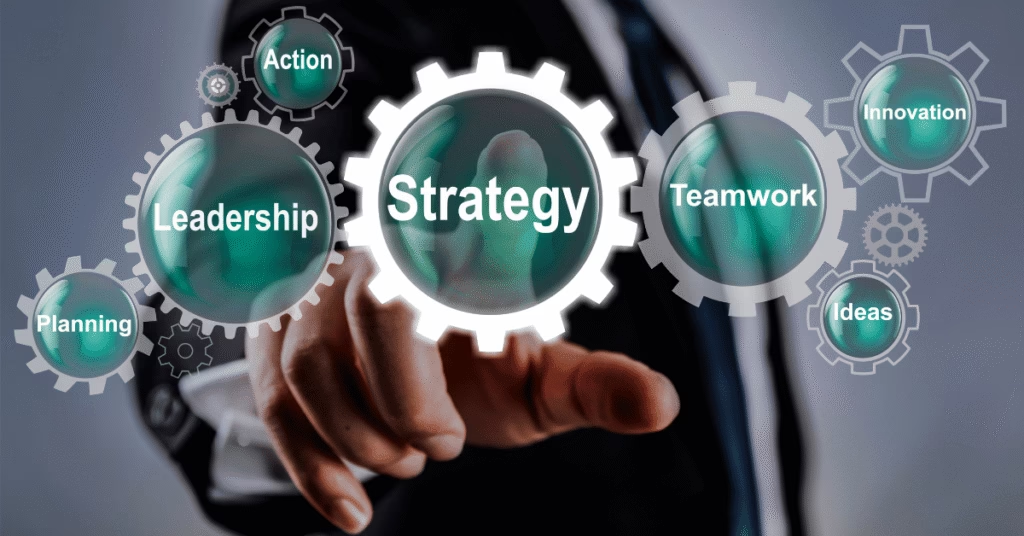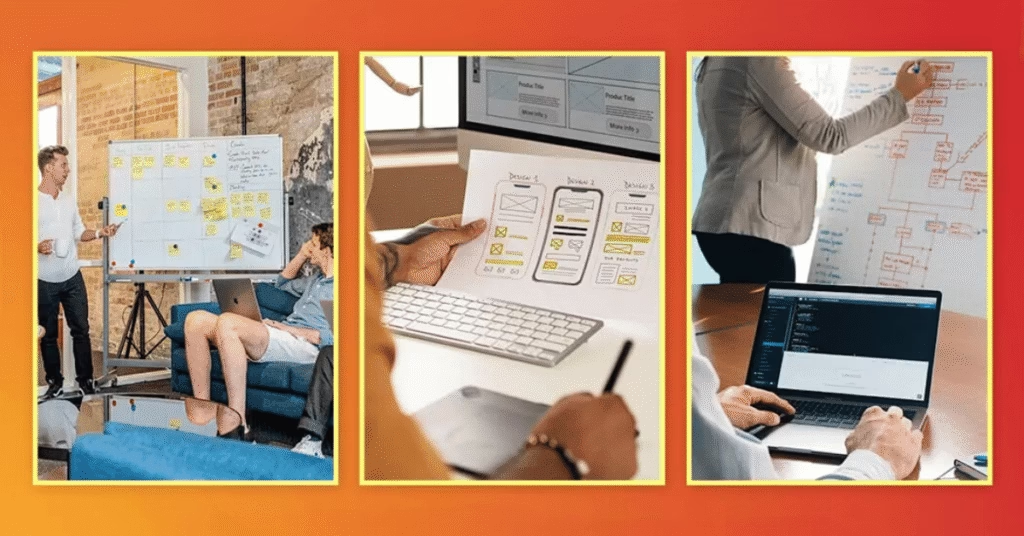Cost-Efficient Infrastructure for Growing Apps

Explore how cost-efficient infrastructure for growing apps helps businesses scale without overspending. Learn strategies, tools, and best practices to build scalable and affordable app architectures.
Efficient User Feedback Loops During Growth Phase

Learn how efficient user feedback loops during the growth phase can help businesses adapt, improve, and scale effectively. Discover best practices, tools, and strategies for collecting and leveraging feedback.
Scaling Architecture: From Monolith to Microservices

Explore how scaling architecture from monolith to microservices helps businesses enhance flexibility, improve deployment, and handle growing workloads efficiently while reducing downtime and improving scalability.
From MVP to Scale-Up: Hiring Strategies to Support Growth

Explore hiring strategies to support growth as your startup evolves from MVP to scale-up. Learn how to recruit the right talent, align hiring with business goals, and create a team that thrives through expansion.
When to Pivot: Signs Your MVP Needs a Change

Learn the top signs your MVP needs a change and understand when to pivot your MVP. Discover strategies to adapt, improve user experience, and stay competitive in the market.
MVP to Market Leader: Scaling Strategies That Actually Work

From MVP to Market Leader isn’t just about growth—it’s about scaling smart. Discover proven strategies for product evolution, team building, and sustainable business expansion.
How to Build an MVP in 30 Days: A Step-by-Step Guide for Entrepreneurs

Entrepreneurs everywhere are looking for faster ways to test startup ideas without burning months of time or draining their savings. The good news? You can absolutely build an MVP in 30 days and get your product into the hands of real users before your competitors even launch.
5 Common MVP Mistakes That Kill Startups (And How to Avoid Them)

Discover the 5 most common MVP mistakes startups make and how to avoid them to increase your chances of building a successful minimum viable product.
MVP vs Prototype vs POC: Understanding the Differences and When to Use Each

Discover the key differences between MVP, prototype, and POC, and learn when to use each for faster, smarter product development.
From Concept to Launch: The Role of MVP in Product Success

Explore why MVPs are essential for startups and enterprises alike Building the Foundation for Successful Products Launching a new product can be an exciting yet daunting task. Startups and enterprises alike face the challenge of validating ideas, meeting user expectations, and minimizing risks, all while keeping development costs in check. Enter the Minimum Viable Product (MVP)—a strategy that allows businesses to develop a functional version of their product with core features, enabling them to gather feedback and iterate effectively. This article explores the concept of an MVP, its critical role in product development, and how it drives product success by balancing innovation with practicality. What is an MVP? An MVP (Minimum Viable Product) is a basic version of a product that includes only its core functionalities, designed to test a business idea with minimal resources. By focusing on delivering value to early adopters, an MVP allows businesses to validate assumptions, identify user needs, and make data-driven improvements before investing in full-scale development. Key Characteristics of an MVP: The Importance of MVPs in Product Development 1. Validates Business Ideas An MVP provides a platform to test the viability of a product concept. By collecting user feedback, businesses can confirm whether their solution addresses a real problem and resonates with the target audience. 2. Minimizes Risks Developing a full-fledged product without validation can lead to wasted resources if the market response is poor. MVPs mitigate this risk by enabling businesses to pivot early based on real-world insights. 3. Accelerates Time-to-Market MVPs allow businesses to launch a functional product quickly, giving them a competitive edge and the opportunity to establish an early market presence. 4. Facilitates Resource Allocation By focusing on core functionalities, businesses can allocate resources more effectively, avoiding unnecessary expenditures on features that may not add value. 5. Enhances Customer-Centricity Through iterative development, businesses can refine their product to align closely with user needs, improving customer satisfaction and loyalty. Steps to Develop an MVP 1. Identify the Problem Define the core problem your product aims to solve and ensure it addresses a specific need in the market. Understanding the pain points of your target audience is critical for success. 2. Define Core Features Determine the minimum set of features required to deliver value and solve the identified problem. Avoid adding unnecessary functionalities during this stage. 3. Research the Market Analyse competitors, user preferences, and industry trends to ensure your MVP stands out while addressing real user needs. 4. Choose the Right Tech Stack Select technologies that support scalability, security, and rapid development. Popular options for MVPs include React for front-end, Node.js for back-end, and Firebase for hosting. 5. Develop the MVP Focus on building a functional prototype with the defined core features. Use agile development methodologies to iterate quickly and efficiently. 6. Test with Early Adopters Launch the MVP to a select group of users who represent your target audience. Gather feedback on usability, performance, and satisfaction. 7. Refine and Iterate Based on user feedback, make improvements to your product, adding features and enhancements in subsequent iterations. Common Mistakes to Avoid When Building an MVP 1. Overcomplicating the MVP Including too many features dilutes the focus of an MVP and increases development time and costs.Solution: Stick to the core functionalities that address the primary user problem. 2. Ignoring User Feedback Failing to incorporate feedback from early adopters leads to missed opportunities for improvement.Solution: Actively engage with users, analyse feedback, and prioritize changes based on their needs. 3. Rushing to Launch Launching an MVP without adequate testing can result in poor user experiences and a tarnished reputation.Solution: Conduct thorough testing to ensure the product is functional and reliable. 4. Neglecting Scalability Building an MVP without considering future scalability can create challenges as the product grows.Solution: Use flexible technologies and plan for scalability during development. Industries Benefiting from MVP Development 1. Healthcare Healthcare startups use MVPs to test telemedicine apps, wearable device integrations, and patient management systems before full-scale deployment. 2. E-Commerce MVPs help e-commerce businesses launch platforms with essential features like product listings, payment gateways, and basic analytics. 3. Fintech Fintech companies validate innovative solutions like digital wallets, investment platforms, and blockchain-based products through MVPs. 4. EdTech Education technology companies use MVPs to test learning management systems, virtual classrooms, and gamified learning apps. 5. SaaS (Software as a Service) SaaS providers leverage MVPs to evaluate subscription models, user engagement, and feature prioritization. Technologies Used in MVP Development 1. Frameworks for Rapid Prototyping Frameworks like Django, Ruby on Rails, and Laravel enable quick development of back-end systems. 2. Front-End Libraries React, Angular, and Vue.js are popular for building intuitive user interfaces. 3. Cloud Hosting Platforms AWS, Google Cloud, and Firebase provide scalable and cost-effective hosting solutions for MVPs. 4. Analytics Tools Platforms like Google Analytics, Mixpanel, and Hotjar help track user behaviour and gather feedback. 5. Version Control Systems Tools like Git ensure seamless collaboration and code management during MVP development. Future Trends in MVP Development 1. AI-Powered MVPs Artificial intelligence is enhancing MVPs with features like predictive analytics, personalized recommendations, and automated testing. 2. Low-Code/No-Code Development These platforms simplify the MVP development process, allowing non-technical founders to build and test their ideas quickly. 3. Focus on Sustainability MVPs are being designed with energy-efficient architectures, aligning with green IT practices. 4. Blockchain Integration Blockchain-powered MVPs ensure secure, transparent, and tamper-proof operations for industries like finance and supply chain. 5. IoT-Enabled MVPs Internet of Things (IoT) applications leverage MVPs to validate device integration and real-time data collection capabilities. Real-Life Examples of MVP Success 1. Dropbox Dropbox started with a simple MVP—a video demonstrating its functionality—to gauge interest and gather feedback. This approach validated their idea and secured funding for full-scale development. 2. Airbnb Airbnb’s MVP was a basic website allowing users to list and book spaces, proving the demand for short-term rentals before scaling into the global platform it is today. 3. Spotify Spotify launched as an invite-only MVP with a simple streaming feature to test its business model and gather feedback from







